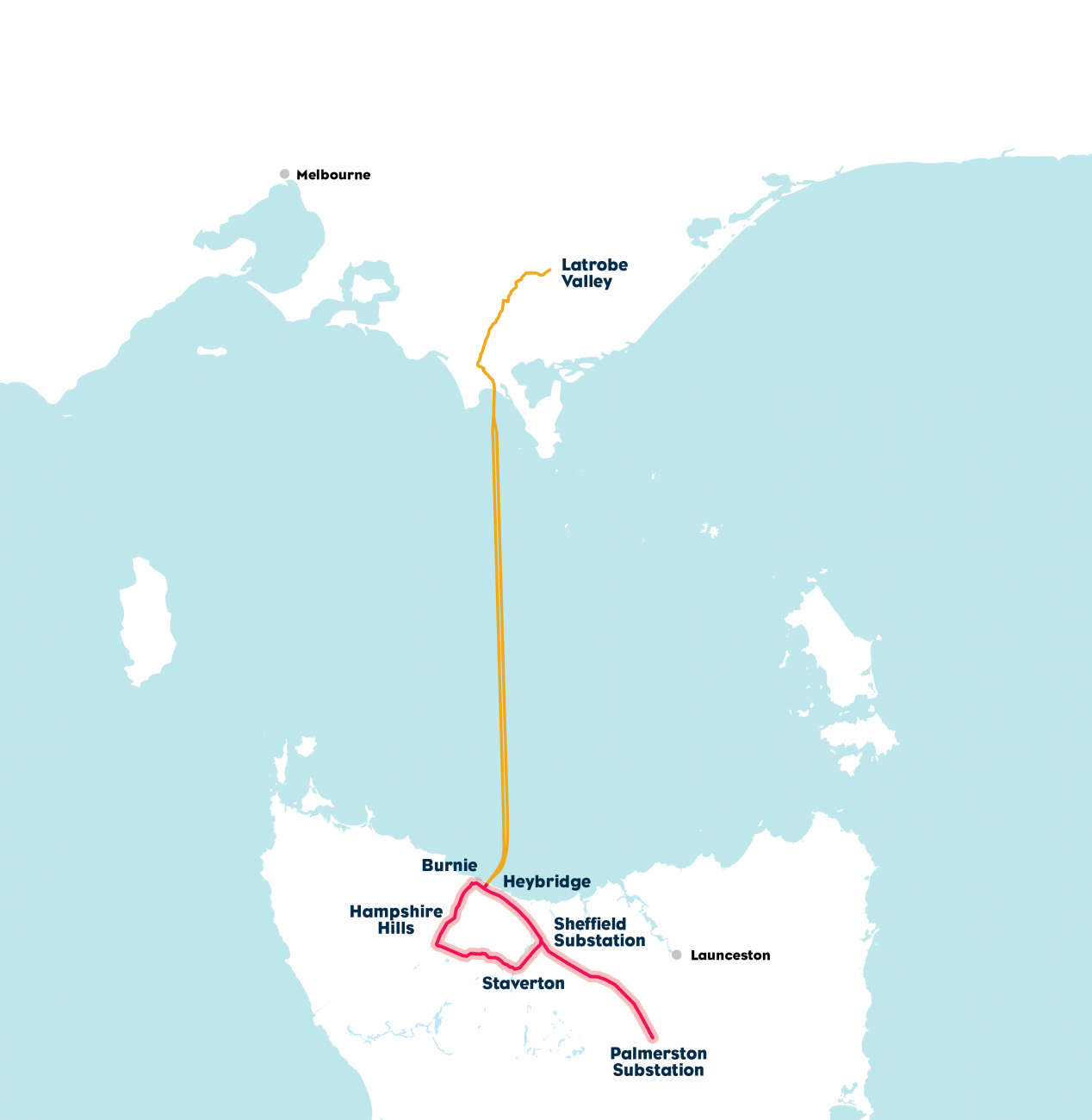Marinus Link is a proposed 1500 megawatt capacity undersea and underground electricity connection to further link Tasmania and Victoria as part of Australia’s future electricity grid. Marinus Link will be supported by transmission network developments on the North West Tasmanian electricity network.
Marinus Link involves approximately 250 kilometres of undersea High Voltage Direct Current (HVDC) cables and approximately 90 kilometres of underground HVDC cables. It will also include converter stations in Tasmania and Victoria, and approximately 220 kilometres of supporting High Voltage Alternating Current (HVAC) transmission network developments in North West Tasmania.
Marinus Link and the supporting transmission developments are known collectively as Project Marinus. Together, these developments will unlock Tasmania’s renewable energy and storage resources to deliver low-cost, reliable and clean energy for customers in the National Electricity Market (NEM).
Marinus Link route
The proposed route for Marinus Link will run from Heybridge, just east of Burnie in North West Tasmania to the Hazelwood area of the Latrobe Valley in Victoria.

Marinus Link will follow a different route to Basslink, in Tasmania, Bass Strait and Victoria. This geographic diversity will provide a more secure and reliable electricity supply for customers.
The proposed location of Marinus Link in North West Tasmania enables connection with some of Australia’s best renewable energy generation and storage resources. In Victoria, the proposed connection is in the Hazelwood area of the Latrobe Valley, where access to significant transmission capacity in the Victorian HVAC network has been identified.
Interconnectors
Marinus Link is an interconnector, as it connect two or more transmission networks. Interconnectors allow power to flow between different regions (i.e. between Tasmania to Victoria), enabling the efficient transfer of energy from renewable energy generation zones to where the electricity is needed. Interconnectors can increase the resilience of the NEM, making energy more secure, affordable and sustainable for customers.
Interconnectors are common around the world, including in Australia, and will play a critical role in supporting Australia’s transition to a clean energy future.